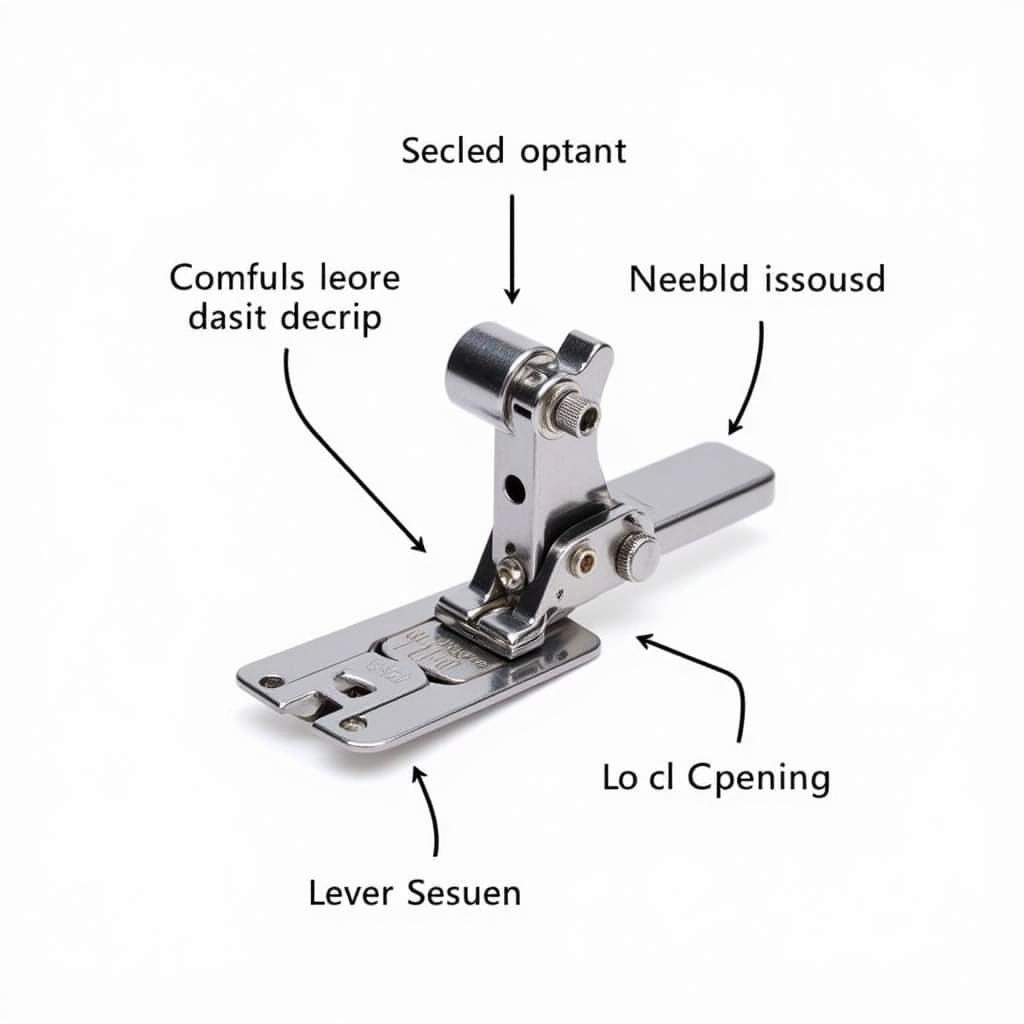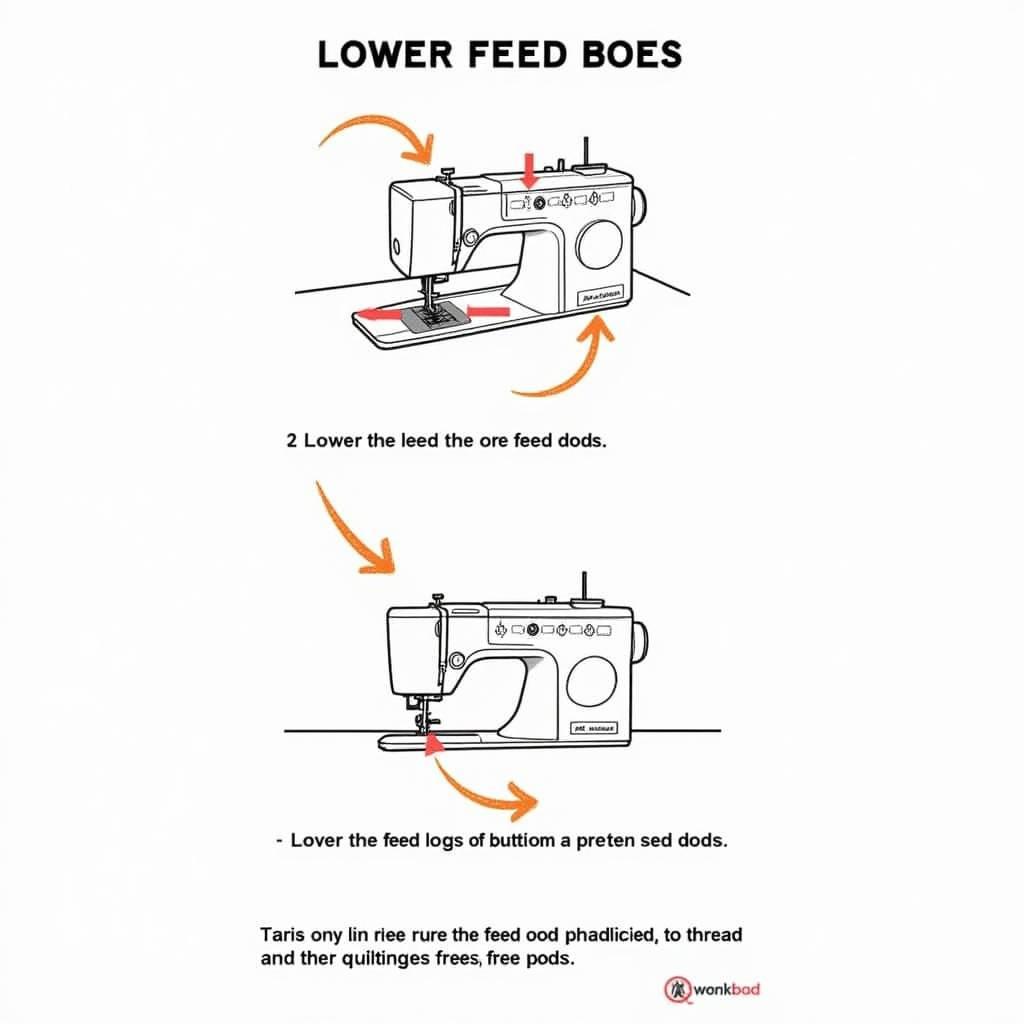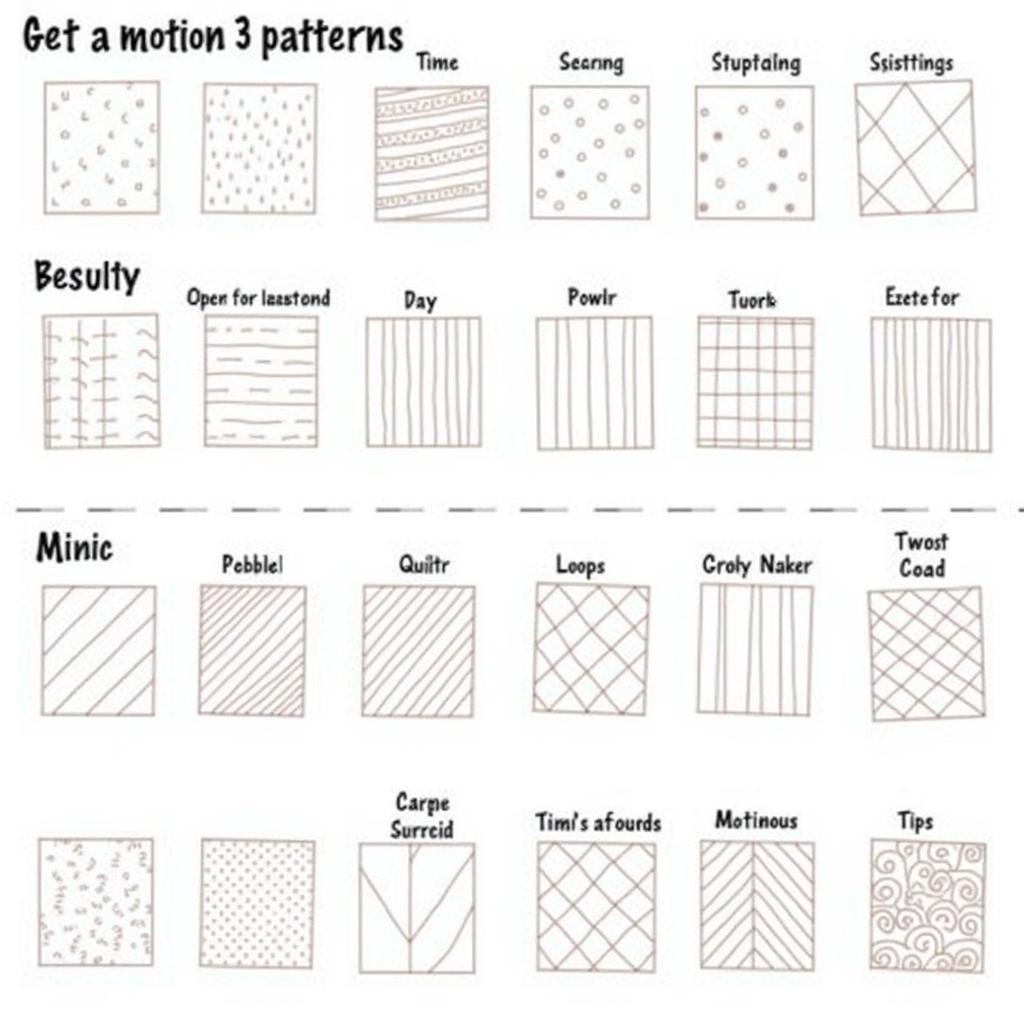The world of quilting offers endless creative possibilities, and at the heart of this artistry lies the Free Motion Quilting Foot. This ingenious tool empowers you to ditch the constraints of pre-set designs and stitch intricate patterns with the grace of a painter wielding a brush. Whether you’re a quilting novice or a seasoned sewist looking to expand your repertoire, understanding the free motion quilting foot is your gateway to a world of quilting freedom.
Unveiling the Free Motion Quilting Foot
 Free motion quilting foot anatomy
Free motion quilting foot anatomy
A free motion quilting foot, often dubbed a darning foot, differs significantly from your regular presser foot. Its unique design allows the fabric to move freely under the needle, giving you complete control over the stitching direction. Imagine drawing with your sewing machine – that’s the essence of free motion quilting.
Choosing Your Weapon: Types of Free Motion Quilting Feet
Selecting the right free motion quilting foot can be a game-changer for your quilting experience. Here’s a glimpse into the commonly used types:
- Open Toe Foot: Provides excellent visibility of the stitching area, ideal for intricate designs and tight curves.
- Closed Toe Foot: Offers more stability and prevents fabric from being pulled into the feed dogs, suitable for beginners and smoother curves.
- Spring-Loaded Foot: Designed to ‘hop’ over varying fabric thicknesses, ensuring even pressure and preventing puckering.
Setting the Stage for Free Motion Quilting Success
 Preparing sewing machine for free motion quilting
Preparing sewing machine for free motion quilting
Before you embark on your free motion quilting adventure, it’s crucial to set up your machine for optimal results:
- Engage Free Motion Mode: Lower or cover your sewing machine’s feed dogs. This disengages the fabric feeding mechanism, giving you complete control over the fabric’s movement.
- Select the Right Needle: Opt for a quilting needle (size 12 or 14) or a Microtex needle (size 80/12 or 90/14) for smooth piercing through multiple layers of fabric and batting.
- Thread Choice Matters: Use high-quality quilting thread for both the top and bobbin. This ensures durability and prevents thread breakage during the quilting process.
- Test on Scraps: Practice on fabric scraps similar to your quilt sandwich to fine-tune your stitch length, tension, and get comfortable with the foot’s movement.
Mastering the Art: Free Motion Quilting Techniques
 Different free motion quilting patterns
Different free motion quilting patterns
Free motion quilting is all about fluidity and rhythm. Start with basic shapes and patterns, gradually building your confidence and skillset.
- Stippling: The cornerstone of free motion quilting, stippling involves creating a random pattern of small stitches, adding texture and depth to your quilt.
- Meandering: As the name suggests, meander your stitches across the quilt, creating flowing lines and organic shapes.
- Loops and Spirals: Experiment with creating loops of varying sizes, connecting them to form continuous spirals and swirling patterns.
Troubleshooting Tips: Conquering Common Challenges
- Uneven Stitches: Ensure consistent speed while moving the fabric and maintain a steady rhythm. Practice makes perfect!
- Thread Breakage: Check your needle for damage, re-thread the machine, and adjust the tension if necessary.
- Skipped Stitches: Use the correct needle type and size for your fabric and batting combination. Also, ensure proper needle insertion.
Free Motion Quilting: Beyond the Basics
Once you’ve mastered the fundamentals, explore the endless possibilities of free motion quilting:
- Free Motion Embroidery: Add personalized designs, lettering, or embellishments to your quilts using decorative threads and free motion techniques.
- Thread Painting: Create stunning visual effects by layering different colored threads and using free motion stitching to mimic brushstrokes.
Remember, free motion quilting is a journey of discovery. Embrace the learning process, experiment with different techniques, and don’t be afraid to make mistakes. With practice and passion, you’ll be amazed at the quilting masterpieces you can create.
FAQs: Answering Your Free Motion Quilting Queries
1. Do I need a special sewing machine for free motion quilting?
Most sewing machines with a free motion or darning foot capability are suitable for free motion quilting.
2. What is the ideal stitch length for free motion quilting?
It depends on the desired effect, but a stitch length of 2.5-3.0 is a good starting point.
3. Can I use regular sewing thread for free motion quilting?
While possible, it’s recommended to use quilting thread for its strength and durability, especially for heavily quilted projects.
4. How do I prevent puckering when free motion quilting?
Proper basting, even tension, and using a walking foot or even feed system can help minimize puckering.
5. Where can I find free motion quilting patterns?
free motion quilting patterns pdf free download and free free motion quilting templates offer a wide array of resources.
For further assistance or inquiries about quilting supplies, please contact us at 0972669017, [email protected] or visit us at 142 Trần Nhân Tông, Yên Thanh, Uông Bí, Quảng Ninh, Việt Nam. Our dedicated team is available 24/7 to assist you.